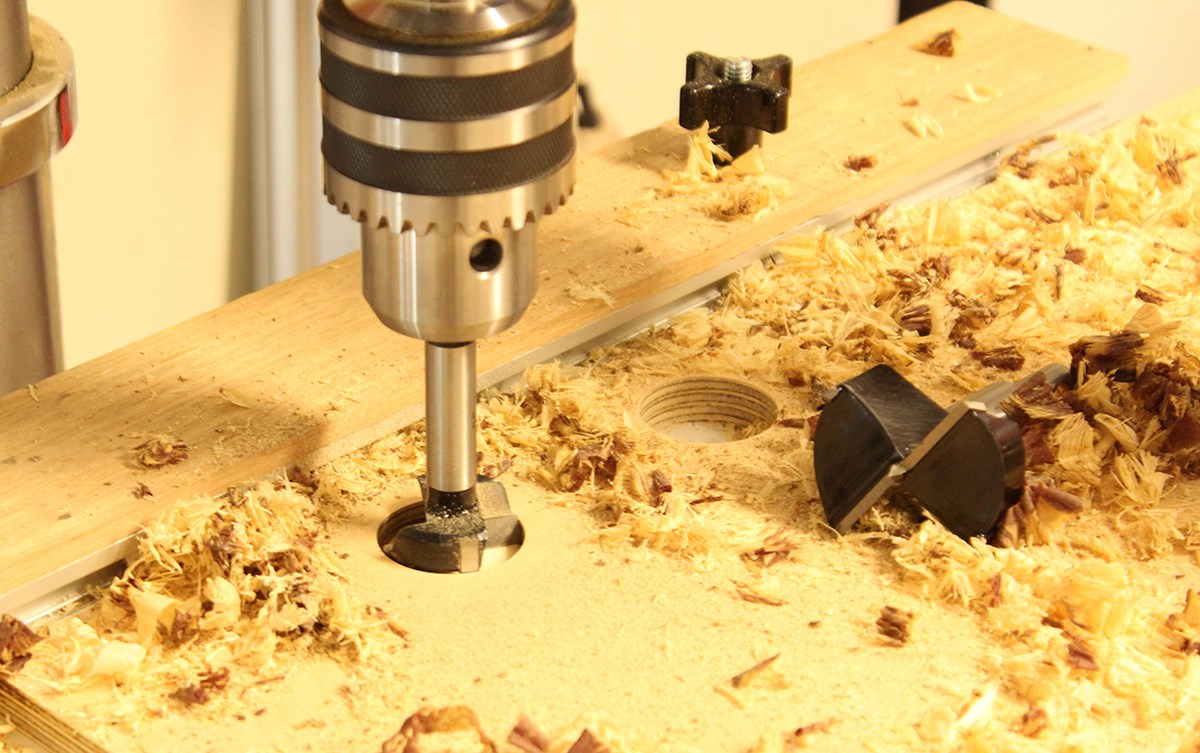For woodworkers striving for precision and quality in their projects, the right tool can make a profound difference. Among the array of specialised tools, the Forstner bit stands out as a critical component for anyone aiming to drill smooth, precise holes. This bit’s unique design and functionality are particularly suited for fine woodworking tasks, setting it apart from traditional drills and spade bits.
What is a Forstner Bit?

The Forstner bit, easily identifiable by its distinctive, broad mushroom-shaped head, is designed specifically for woodworking applications. Unlike twist or spade bits, it features a central brad point for accurate alignment and a circular rim of cutting teeth that slice cleanly through timber fibres, leaving smooth, flat-bottomed holes.
These bits are available in various materials and quality levels. Standard Forstner bits are typically crafted from tool steel, making them suitable for occasional use. More demanding woodworking tasks often require carbide-tipped Forstner bits, renowned for their longevity, sharpness retention, and efficiency.
Advantages of Using Forstner Bits
The hallmark advantage of Forstner bits is their exceptional accuracy and clean cut. They are unmatched for tasks such as drilling hinge cup recesses for cabinet doors or creating neatly defined mortises. Because Forstner bits cut rather than tear through wood fibres, they produce minimal tear-out, maintaining a professional-quality finish.
Their design also allows woodworkers to drill partial holes or overlapping holes without drifting, something that twist or spade bits struggle to achieve. This capability is indispensable when creating intricate patterns or recessed fittings in fine furniture or cabinetry.
Carbide vs. Standard Forstner Bits
 Standard steel Forstner bits perform adequately for occasional jobs but heat up quickly, potentially becoming dull after frequent use. This leads to slower drilling speeds, increased friction, and, ultimately, reduced efficiency.
Standard steel Forstner bits perform adequately for occasional jobs but heat up quickly, potentially becoming dull after frequent use. This leads to slower drilling speeds, increased friction, and, ultimately, reduced efficiency.
On the other hand, carbide-tipped Forstner bits bring significant enhancements. Carbide tips maintain their cutting edges far longer, produce less heat, and cut faster, greatly benefiting professionals working on larger or repetitive projects. Although carbide-tipped bits are pricier initially, their extended lifespan makes them a cost-effective choice in the long term.
Using Forstner Bits Effectively
To achieve optimal results, using Forstner bits in a drill press is ideal, as it ensures stability and precise control. Although handheld drills can manage these bits, care must be taken to avoid wobble and uneven pressure, particularly with larger bits.
Additionally, Forstner bits are best suited for shallow to moderately deep holes. Deep drilling with these bits can lead to overheating and potential wandering off-center due to the short shank length. To maintain accuracy and prolong bit life, drilling slowly, frequently clearing chips, and allowing the bit to cool is recommended.
Final Thoughts
Forstner bits are an essential investment for any serious woodworker aiming for precision and quality in their craft. Choosing the right bit, standard steel or carbide-tipped, depends largely on the scale and frequency of projects. Regardless of the selection, the benefits of clean edges, flat-bottomed holes, and minimal tear-out cannot be overstated. By mastering the use of Forstner bits, woodworkers ensure not just efficiency, but excellence in their finished projects.

